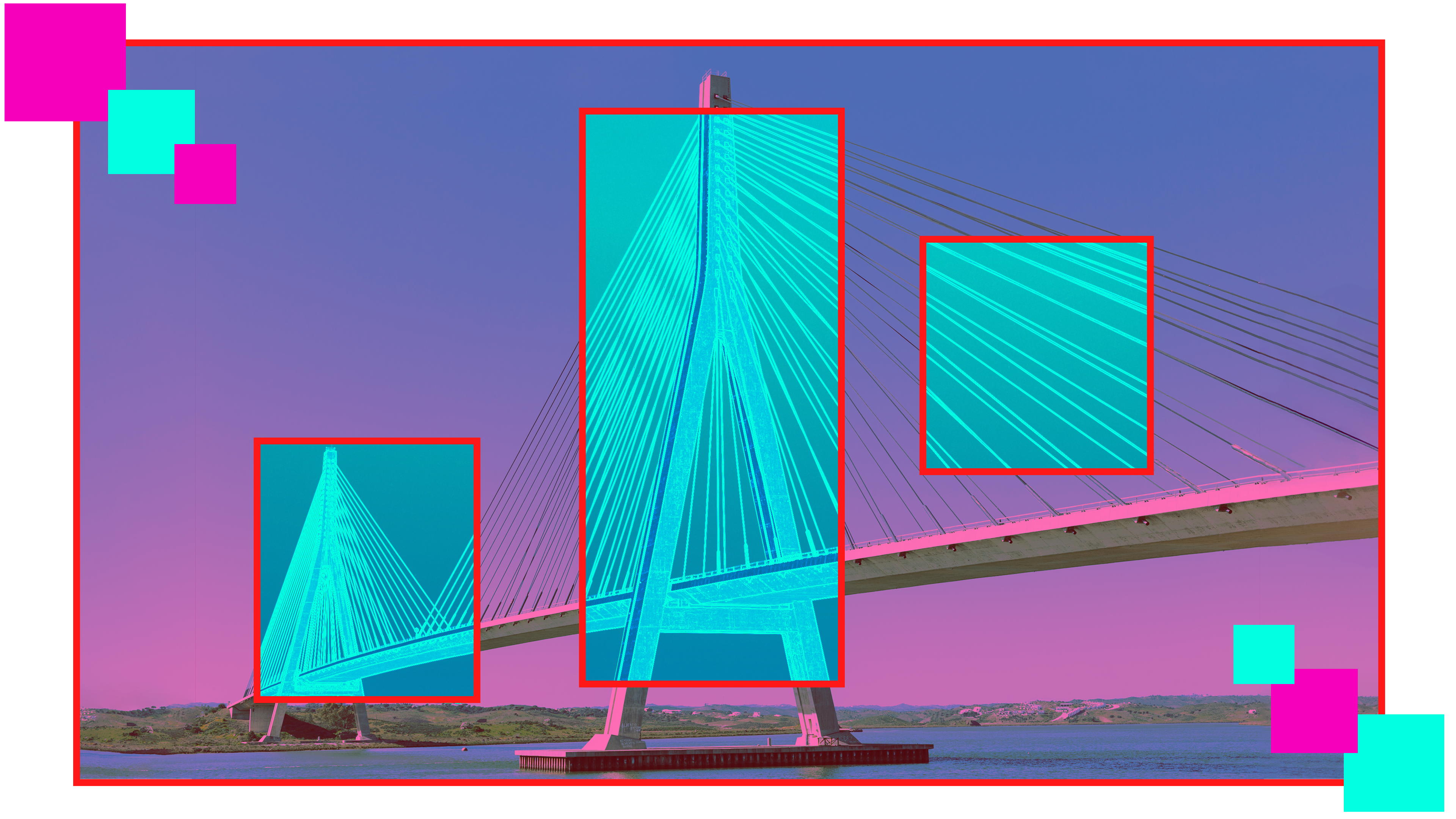
When a 200-metre section of the Morandi Bridge in Genoa collapsed in August 2018, the tragedy was one of the worst in the country’s history, killing 43 people and destroying much of the neighbourhood below.
Although the precise cause of the disaster remains uncertain, an investigation into the pre-stressed concrete structure suggested it was triggered by the rupture of load-bearing cables inside one of the main supporting pillars, which were eaten away over time by a highly corrosive atmosphere.
In June 2021, a residential high-rise in Surfside, Florida collapsed, killing nearly 100 people. Early interrogation of the wreckage pointed to evidence of extensive corrosion of steel rebar within the concrete and overcrowded reinforcement layouts that may have destabilised the building.
Both catastrophes demonstrate how concrete in need of repair can lead to sudden collapse and terrible loss of life, but what if there were a simpler way to peer inside structures to reveal defects or damage? What if particles from space could give us all the subsurface intelligence we need without invasive drilling?
Experts around the world are spearheading the development of devices designed to detect cosmic ray muons – tiny subatomic particles that penetrate through just about any material to reveal their innermost secrets.
Safer and able to penetrate deeper than any other form of non-destructive sensing, muon tomography, or ‘muography’, could hold the key to the long-term safety of large civil structures, like bridges, power plants or dams. More effective preventative maintenance campaigns could be implemented for tower blocks, museums and cathedrals.
The race to create mass market detectors is heating up, but developers face challenges: muons are relatively sparse in number (as a rule of thumb, one muon passes through your hand every second) so it can take weeks or even months to record enough data. Equipment is currently too large to be easily portable, and the construction industry’s reliance on established remote-sensing methods threaten to stymie uptake and investment.
David Mahon, business development manager at muographic imaging company Lynkeos Technology and a research fellow in the School of Physics and Astronomy at the University of Glasgow, says: “Lots of people know how to use ultrasound and radar, so trying to convince them there is a new toy on the market that can do better things is difficult … However, once we have successful trials and use cases in place, you'll start to see demand increasing. This is really something they should be using more regularly.”
The discovery of muons dates back to the 1930s, when experiments revealed the existence of short-lived, highly energetic particles roughly 200 times heavier than an electron.
Muons are produced when cosmic rays interact with the atmosphere and their ability to pass through matter decreases based on its density. Materials, like rock, steel, or concrete, absorb or scatter muons in different ways, which can be monitored and displayed in 2D or 3D to reveal the presence of voids, fissures or corrosion.
Research applications for muography in the 20th century focused on archaeology and volcanology - many volcanoes are still actively monitored - but a steep rise in R&D in recent years has resulted in innovative approaches to studying natural or human-made structures.
Andrea Giammanco a particle physicist, muography expert and senior researcher at the Université Catholique de Louvain in Belgium, says: “Experiments with the Large Hadron Collider in Switzerland had a major impact. By pooling resources, scientists could do things unthinkable in the 1990s, giving impetus to technical developments and the development of new tools.”
Current interest in muon sensing is being driven by the inherent drawbacks of existing techniques for peering inside structures. Radar can’t penetrate deeper than about two metres, making it inadequate to assess large structures like bridges, or structures buried deeper below ground. Ultrasound can suffer from interference with dense materials resulting in incoherent images. X-rays offer good penetrative power and detailed images, but, as a form of active artificial radiation they pose a health risk, and usage is either restricted, or banned, depending on the site and application.
Conversely, muons are a safe, naturally occurring form of radiation, as Giammanco puts it: “Anything that was too fragile to survive cosmic rays was destroyed 3bn years ago.” Muon detectors can produce high resolution images, even in noisy or conductive environments, use almost no electricity and have the best long-distance penetrating power of all the sensor options.
The latter benefit came to the fore in the wake of the nuclear crisis at the Fukushima Daiichi power plant in Japan. With direct human access to the reactor buildings impossible due to dangerous levels of radiation, researchers employed proof of principle muography techniques to reveal which cores had melted from outside the exclusion zone.
Nuclear safety is a proven use case for muography. Lynkeos is contracted by the UK’s nuclear industry to scan radioactive waste containers at the Sellafield decommissioned reactor site to help ensure their safety.
In the absence of a deep geological disposal facility, waste containers must be monitored while stored above ground. Muography can penetrate through the heavy shielding to monitor, over time, the behaviour of the waste and any signs of expansion or gases.
Muon imaging systems are typically large, heavy and static, but Lynkeos is in the process of developing a lightweight, low-powered, portable device that can be easily transported to the point of inspection.
The company is working with colleagues at Germany’s Federal Institute for Materials Research and Testing (also known as BAM), to refine the technology, demonstrate where it fits in the armoury of non-destructive testing, and get it approved for commercial use.
According to Mahon, using muons is ideal to pinpoint voids or water ingress in concrete, or inside grout in pre-stressed steel tendon ducts, before any corrosion damages the tendon itself.
“The hope is we can monitor and identify potential weaknesses in advance of failure, to inform preventative maintenance, which is a lot cheaper than having to deal with it retrospectively after a fault has occurred,” says Mahon.
The company is being funded through the UK’s Nuclear Decommissioning Authority to research the development of a battery-powered portable detector with wireless connectivity, to scan ageing concrete structures on nuclear sites.
For many buildings that were constructed in the 1950s, or earlier, muography will improve understanding of the integrity of the concrete, says Mahon, and help authorities better plan decommissioning and dismantling, or provide assurance they are safe to stand for another decade or more.
The company’s technology generates high-res 3D images by positioning detectors on two sides of a structure, but R&D is required to ensure that, for example, they can communicate and pinpoint relative positions when not in line of sight. The technology is modular and devices sit within bespoke 3D-printed support structures that can be adapted “to make detectors of any shape and size,” says Mahon.

“The hope is we can monitor and identify potential weaknesses in advance of failure” David Mahon, Lynkeos Technology
The rush to bring muography to the building and infrastructure space extends to Italy, where researchers at the University of Catania are running a proof of principle project to monitor the stability of a church in Sicily.
Meanwhile, Canada-based Ideon Technologies, which has already gained a strong commercial foothold using muography in mining exploration, sees the critical infrastructure domain as its “next phase of market expansion,” says Kim Lawrence, VP of customer experience at the company.
Ideon produces detailed geophysical surveys and 3D density maps for professionals who explore, map, or monitor underground. According to Lawrence, this directly “reduces the cost, time, risk, and environmental impact” of exploration and investigation.
Andrea Giammanco and his team at Université Catholique de Louvain is involved in a project (with the Royal Institute of Cultural Heritage in Belgium and the University of Antwerp) to develop compact muography machines for use in confined spaces considered unsuitable for other types of scanner. That might include narrow tunnels or other spaces without electricity or internet access, or where there is toxic or flammable gas.
A modular design has enabled the creation of “small and light” prototypes “we can literally put in the back of a car,” says Giammanco, although muon detectors need to be large enough to capture a sufficient number of particles and long acquisition times are standard.
Reducing the size demands compromises, he adds: “We don’t aim at 99% efficiency because 90% is good enough, we don't aim at zero noise because a little noise is okay.”
The team’s goal is to develop a proof of principle device, use it to record a building then reconstruct, from the raw data, the internal structure to verify against the original plans and drawings.
The surge of R&D activity around cosmic ray muons provides an exciting glimpse of a safer and more practical approach to building and infrastructure inspection. It is one that better supports pre-emptive repair and maintenance and, if it is taken mainstream, could radically reduce the likelihood of catastrophes like Morandi Bridge or Surfside from occurring again.

“Experiments with the Large Hadron Collider in Switzerland had a major impact” Andrea Giammanco, particle physicist and muography expert
MODUS
Stuart Watson 11 March 2024